Plitvice Lakes National Park in Winter#
Photos by Sergey Shandin and Stas Sedov, members of the AirPano Team that is a member of the global-geography Consortium.28 March 2017
with kind permission of AirPano
Plitvice Lakes National Park is located in the central part of Croatia and covers an expanse of almost 30,000 hectares. In 1949 this area became the national park, and 30 years later it was added to the UNESCO World Heritage Register. The park is forested with beech, spruce, and fir; and is the home for hundreds of species of plants, animals and birds. But it is mainly known for its water areas: rivers flowing through the limestone carved the landscape and formed natural dams, cascades of lakes, waterfalls and caves.
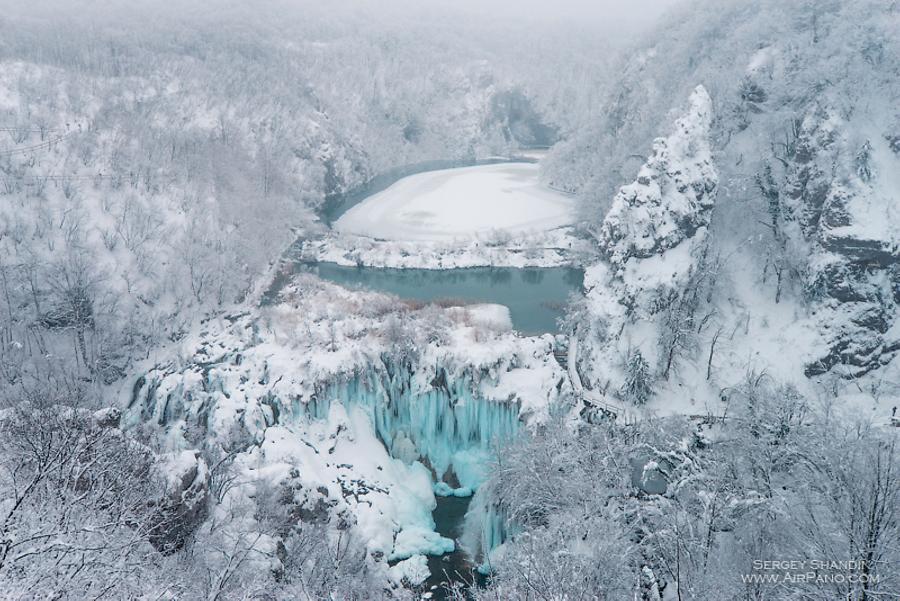
© AirPano
There are 16 large karst lakes and a lot of smaller ones; the total area of their coverage is 217 hectares. These lakes are fed by five rivers: the Korana, the Crna, the Bijela and the Rjecica. The lakes are arranged in cascades, the highest one is the Prošcansko at 636 meters above sea level. The lowest one is lake Novakovica-Brod at an altitude of 503 meters.
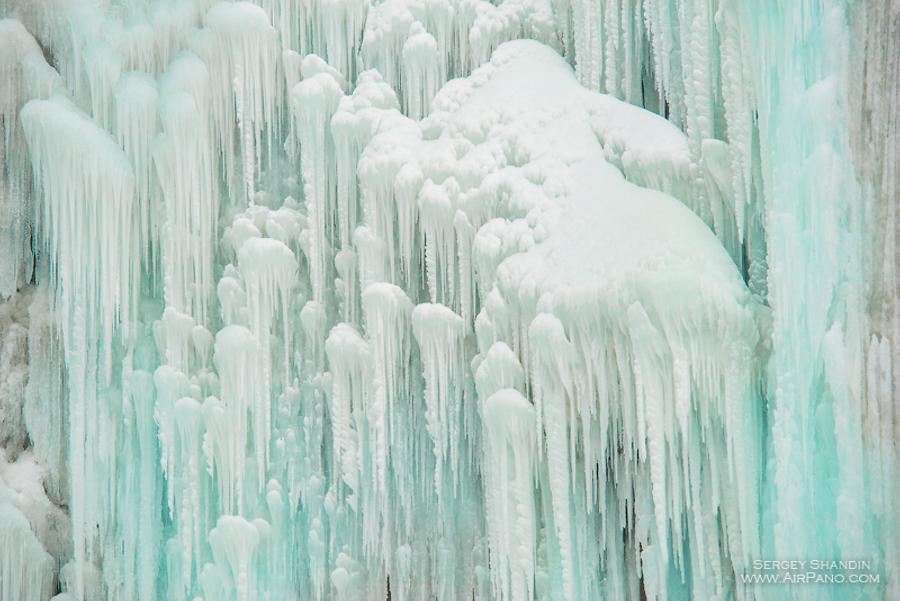
© AirPano
There are more than one hundred waterfalls in the park and new ones appear annually. This process is the result of the way the travertine barriers are formed: these barriers are made not from rocks, but from the deposition of plants. The trees and branches fallen in the water get calcified and create solid depositions blocking rivers. The water gradually erodes the dams giving the way to new waterfalls. Sastavci is considered to be the most beautiful one with a height of 72 meters.
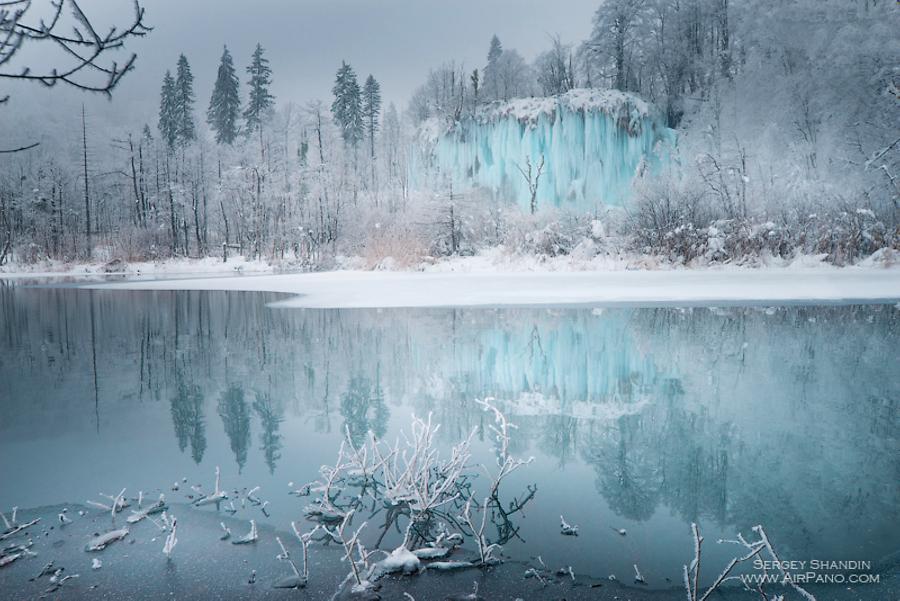
© AirPano
One more interesting feature of the national park is its caves; some of them being located right under the waterfalls. Sometimes they bear rather strange names: Šupljara ("cave without floor and ceiling", "hole-cave"), Crna pecina ("black cave"), Mracna ("sombre cave"). The bats living in these caves among stalactites and stalagmites can vouch for the accuracy of the names!
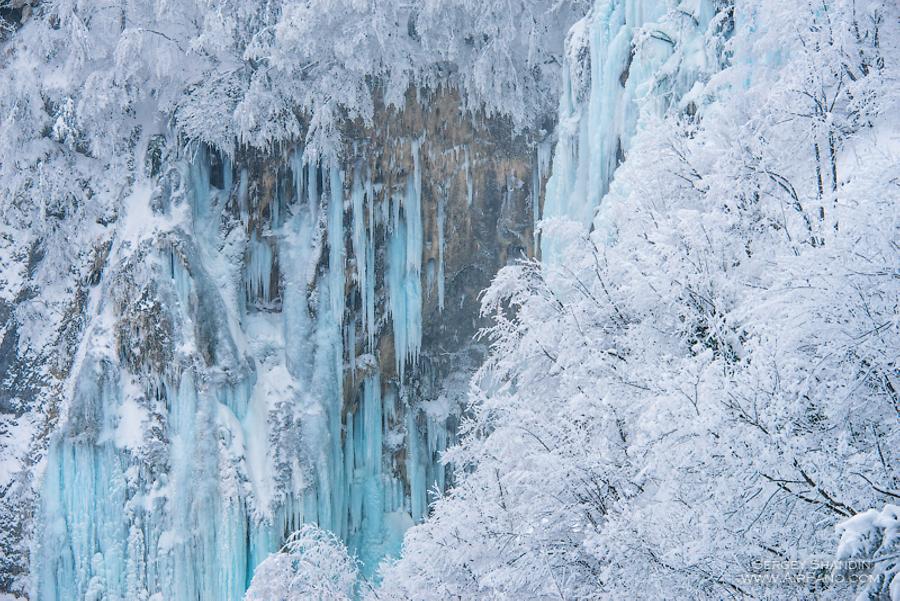
© AirPano
The park had been inaccessible to visitors until 1958, but then the tourist infrastructure began developing. Pavements and footpaths were created, routes for diesel and eco-friendly electrical trains, ferries and boats were developed. The park is a popular destination during the warm season. It's a pleasure to watch multi-coloured landscapes, emerald-green water and trees featuring all shades of green.
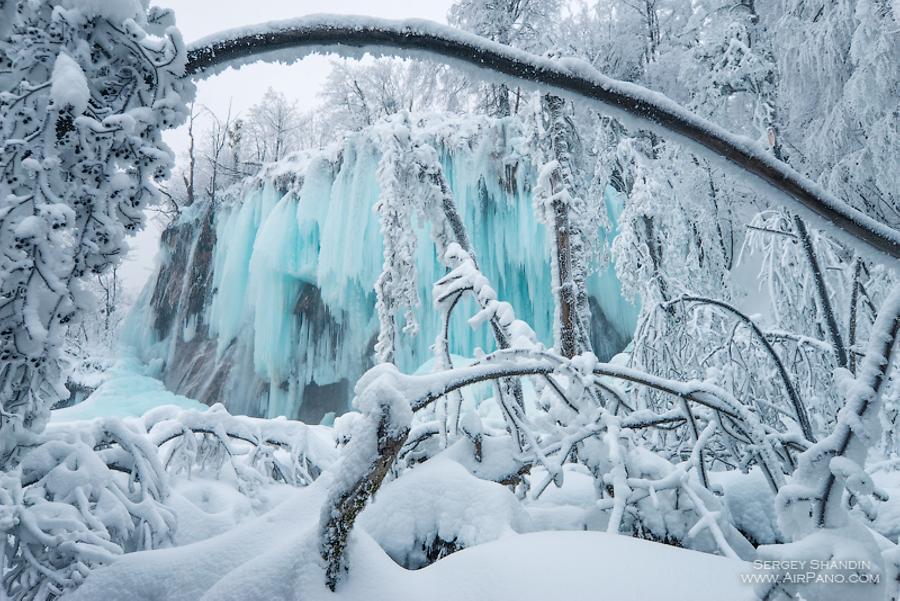
© AirPano
In winter, nature falls into slumber, but it still reveals all kinds of its beauty. The bright colours are replaced by sparkling whiteness, the waterfalls are frozen and the trees bend under the weight of snow; these landscapes seem to have leapt from the pages of a fairytale. The AirPano team wants to show you the Plitvice Lakes just exactly as they are: gorgeous and elegant.
18 panoramas of Plitvice Lakes National Park in Winter